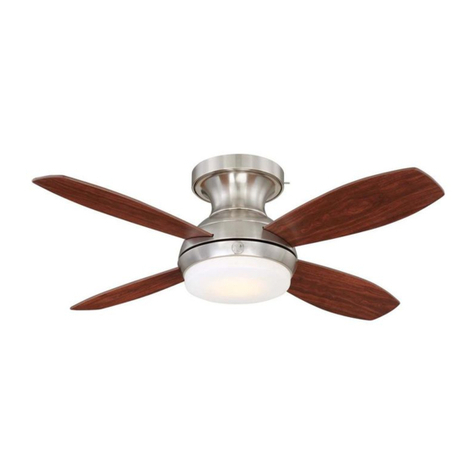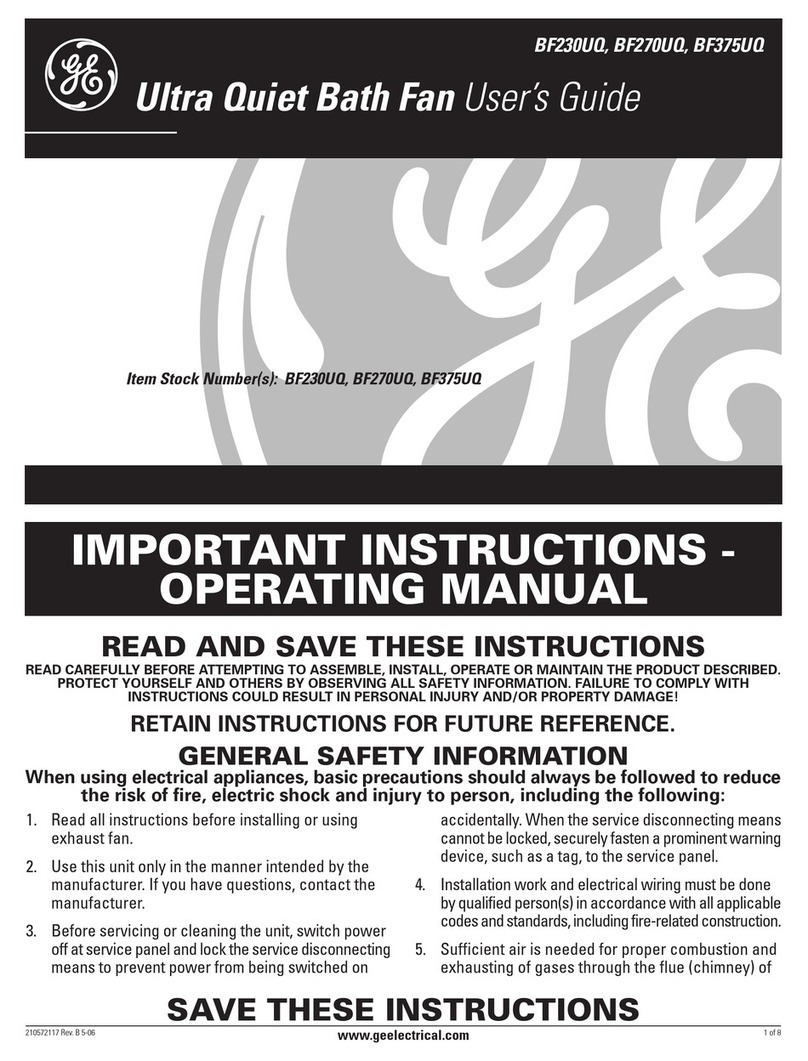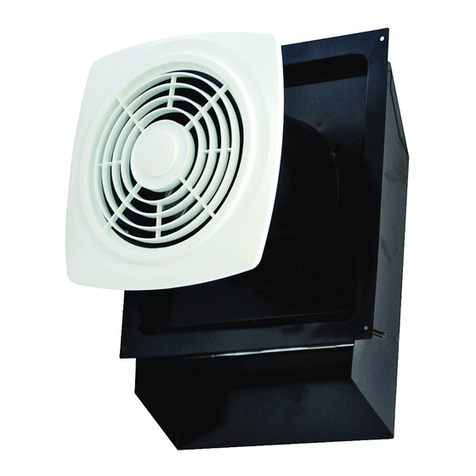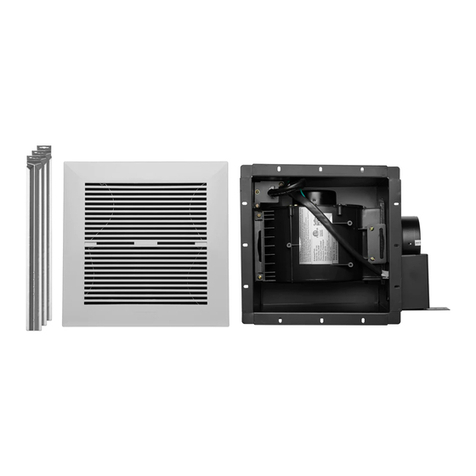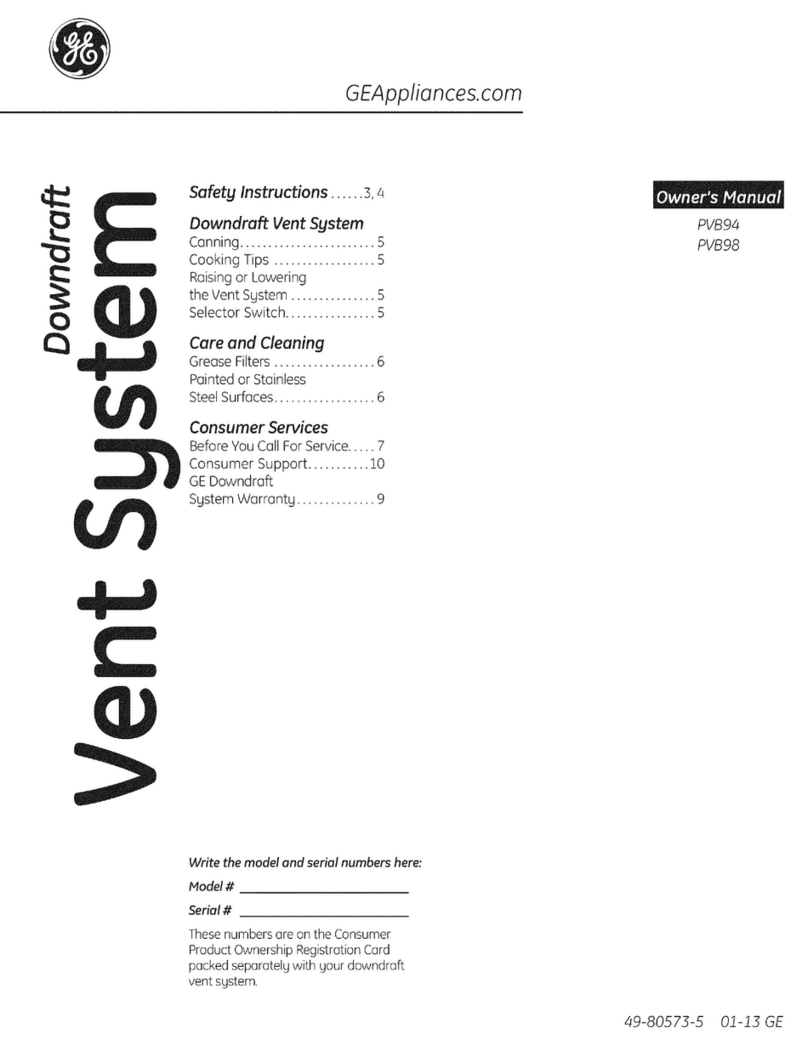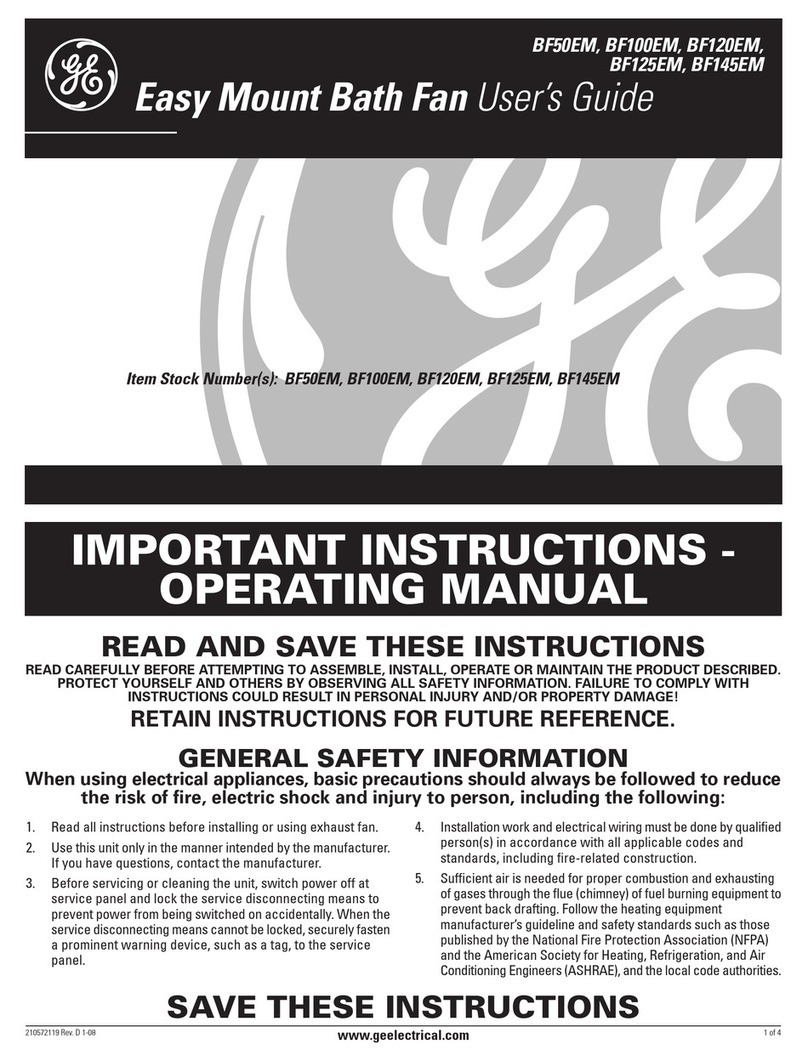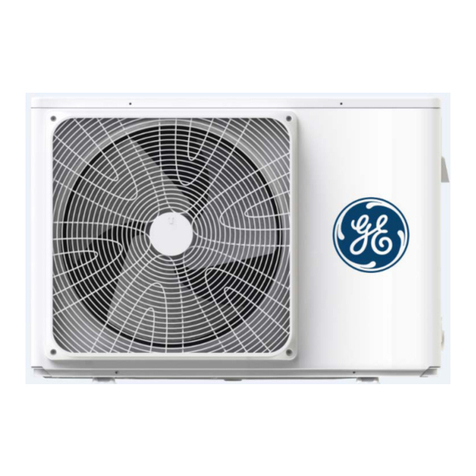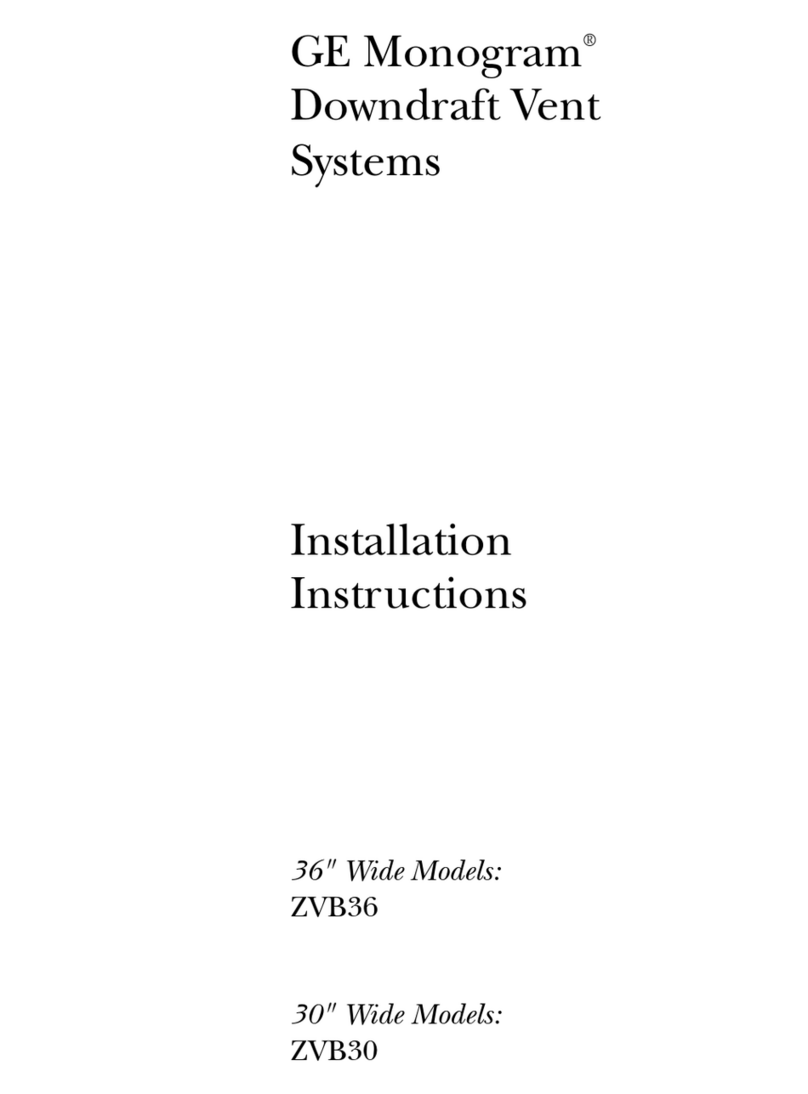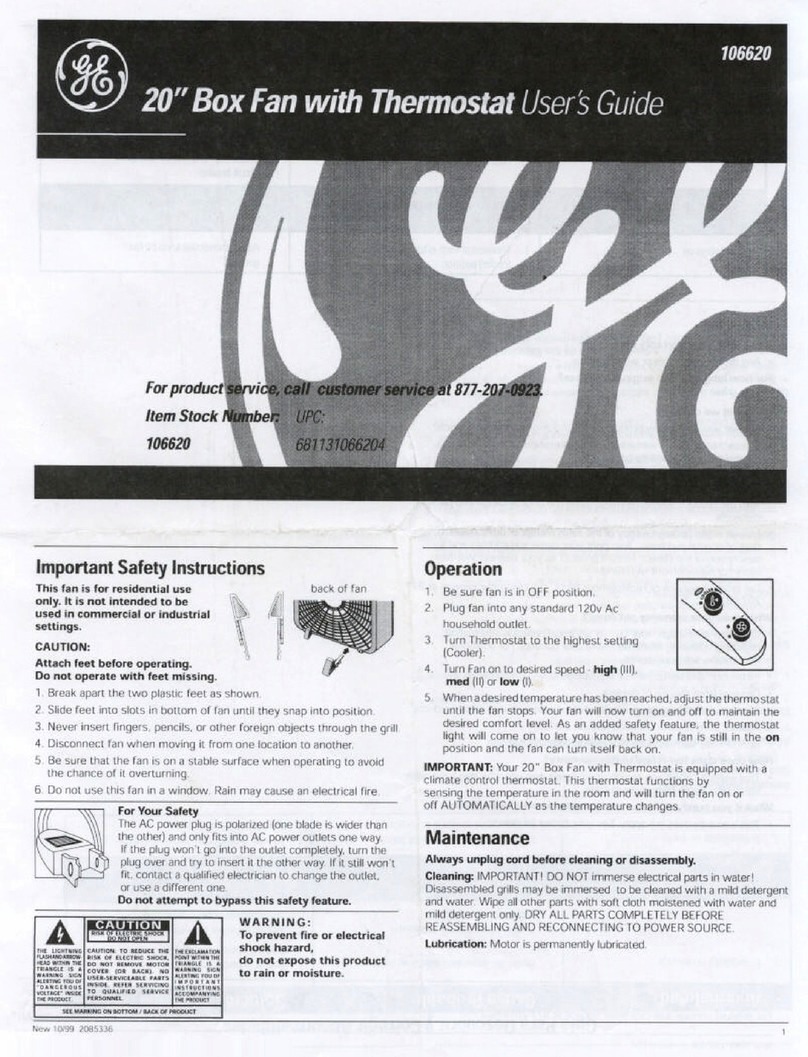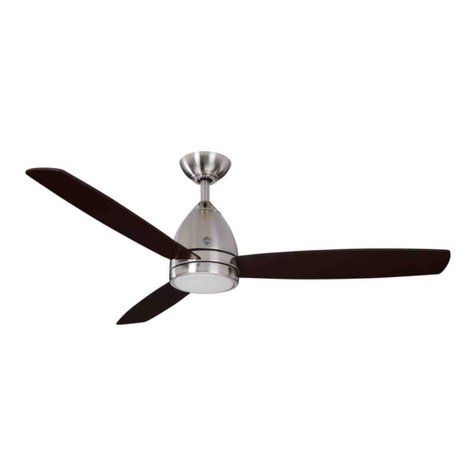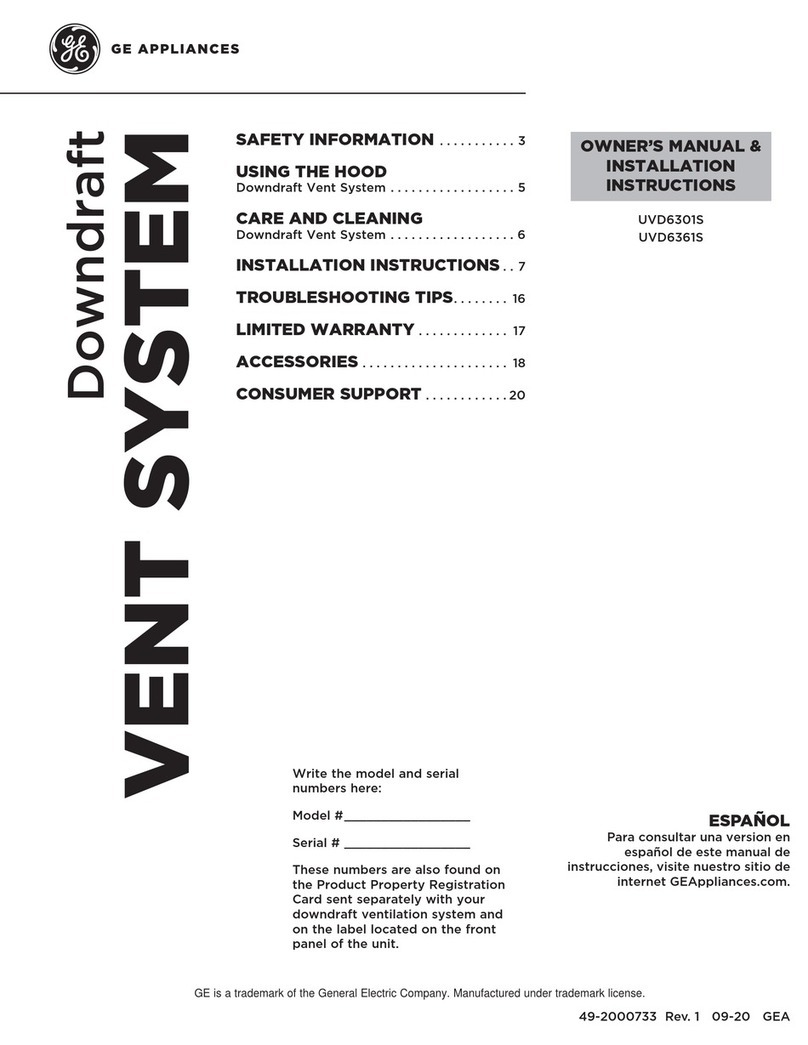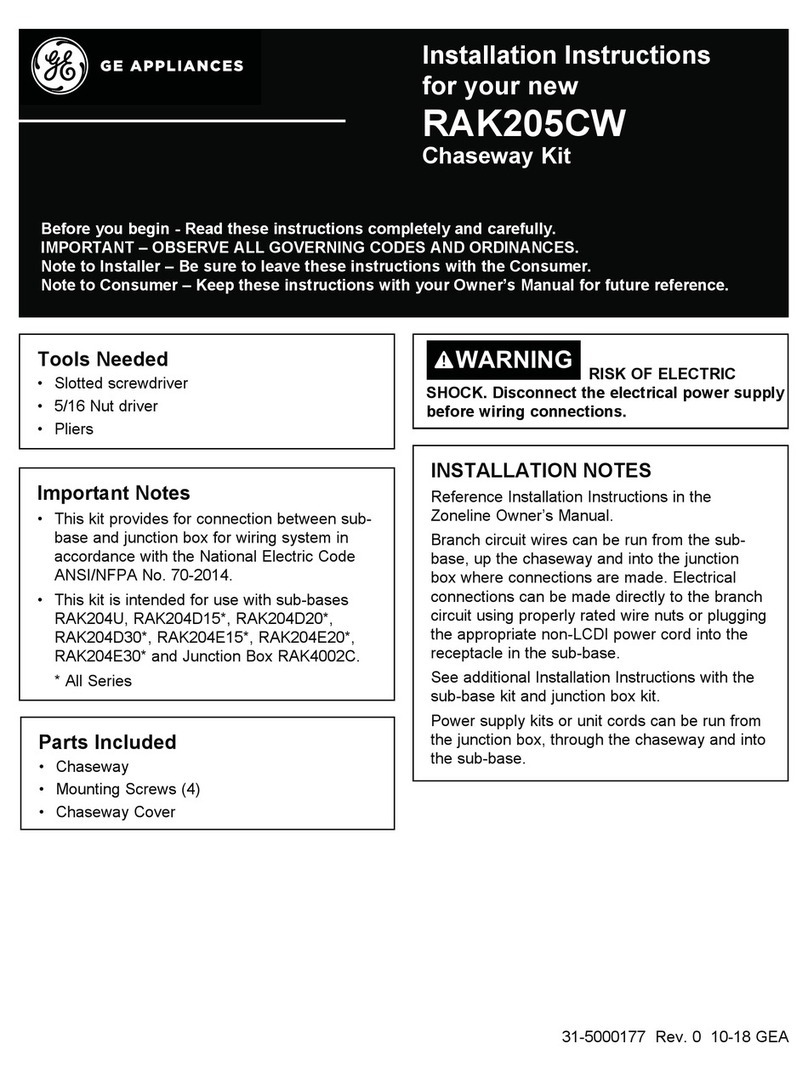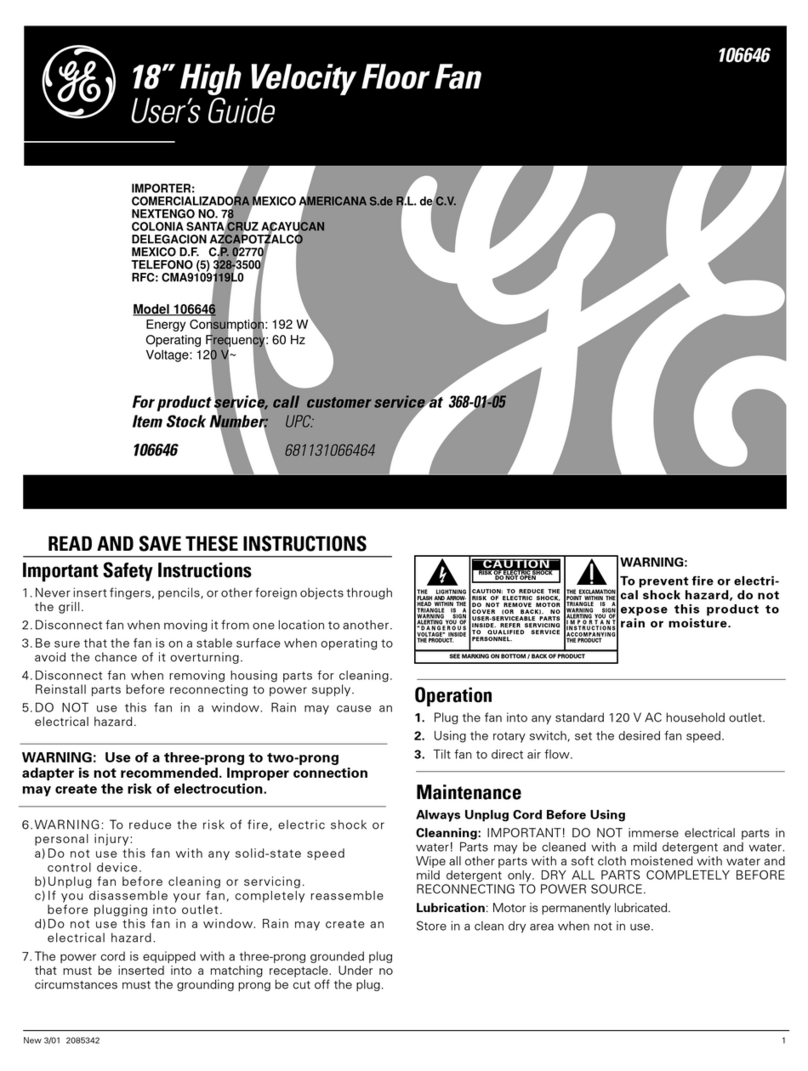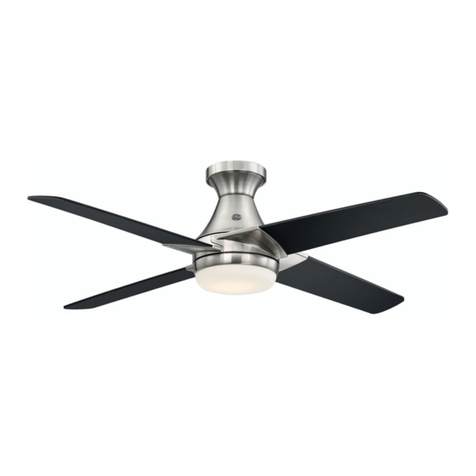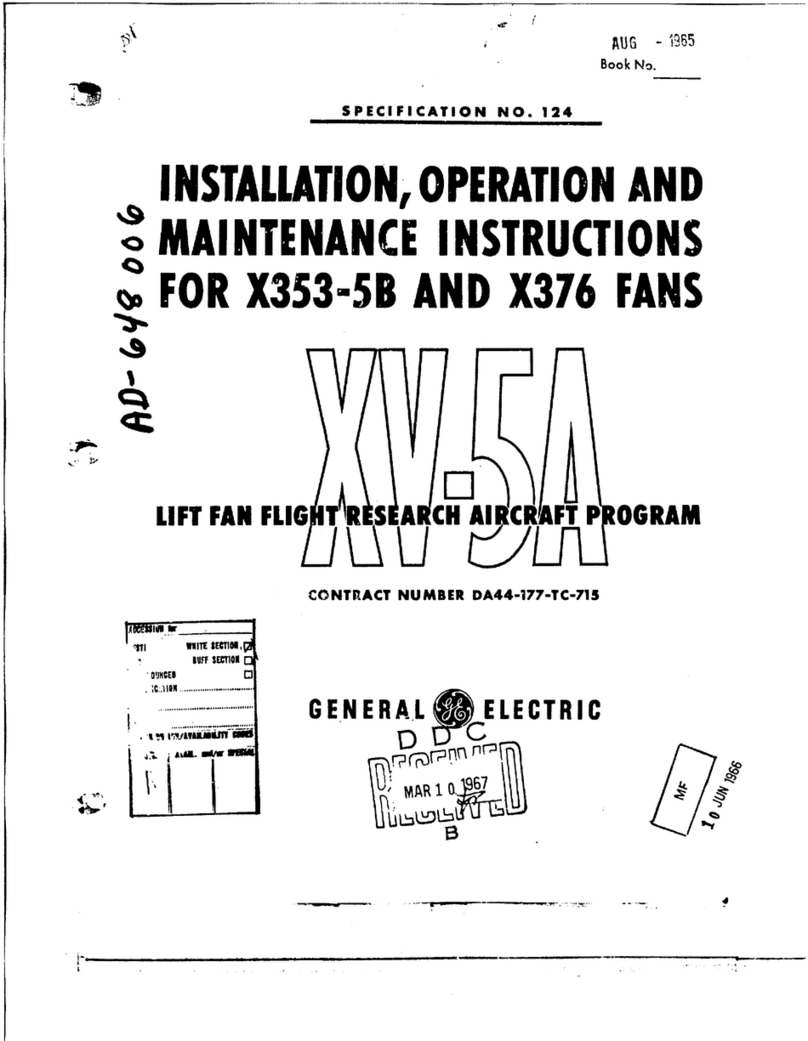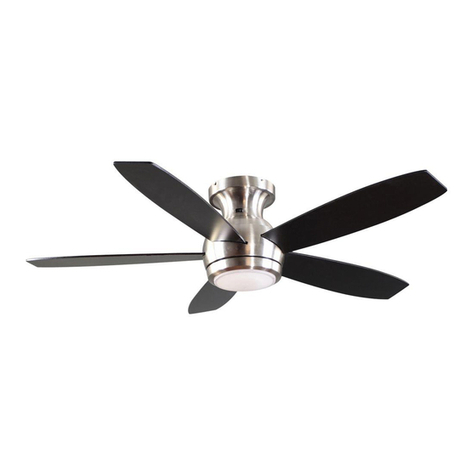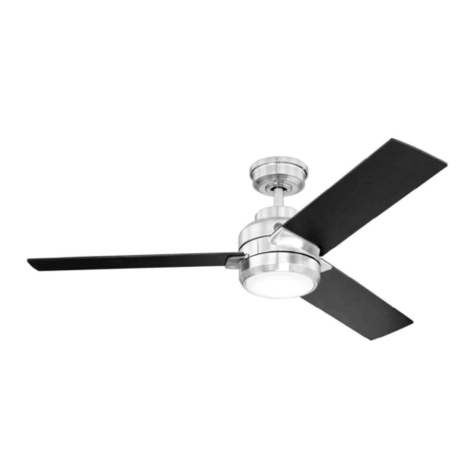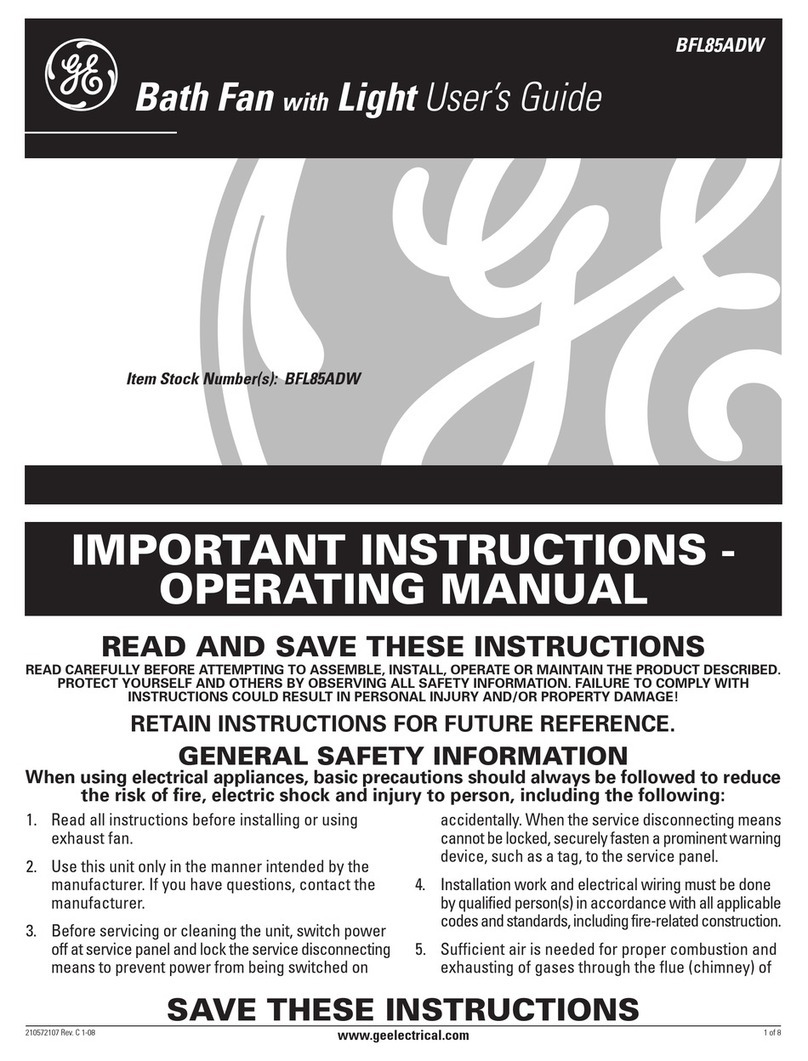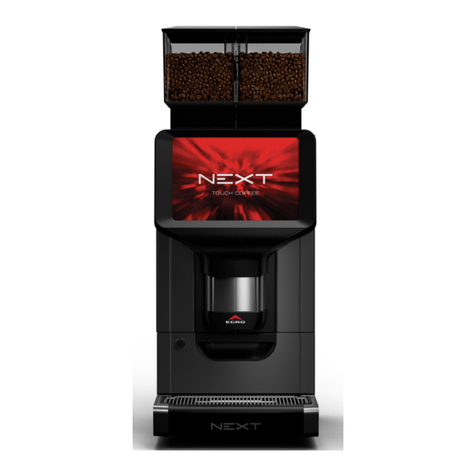
Safety Rules
2
1. To reduce the risk of electric shock, ensure electricity has
been turned off at the circuit breaker or fuse box before
beginning of installation.
2. All wiring must be in accordance with the latest edition of
National Electrical Code “ANSI/NFPA 70” and local electrical
codes. Electrical installation should be performed by a
qualified licensed electrician.
4. CAUTION: To reduce the risk of personal injury, use only
the screws provided with the outlet box.
6. The weight of the fan is 9.95 kg (21.94 lb.). The outlet box and
support structure must be securely mounted and capable
of reliably supporting a minimum of 15.9 kg (35 lb.). Use
only UL Listed outlet boxes marked “FOR FAN SUPPORT.”
7. To prevent personal injury and damage, ensure that the
hanging location allows the blades a clearance of 7 feet
(2.13 m) from the floor and 30 in. (76 cm) from any wall or
obstruction. This fan is suitable for room sizes over 225
square feet (20.9 square meters).
8. Avoid placing objects in the path of the blades.
9. To avoid personal injury or damage to the fan and other
items, be cautious when working around or cleaning the fan.
10.Do not use water or detergents when cleaning the fan or
fan blades. A dry dust cloth or lightly damped cloth will be
suitable for cleaning.
11. After making electrical connections, spliced conductors
should be turned upward and pushed carefully up into
the outlet box. The wires should be spread apart with
the grounded conductor and the equipment-grounding
conductor on one side of the outlet box and ungrounded
conductor on the other side of the outlet box.
12. All screws must be checked and re-tightened where
necessary during installation.
WARNING: To reduce the risk of
fire, electric shock or personal
injury, mount fan to outlet box
marked acceptable for fan
support and use the screws
provided with the outlet box.
WARNING: To reduce the risk
of personal injury, do not bend
the blade arms (also referred
to as flanges), when installing
the brackets, balancing the
blades or cleaning the fan. Do
not insert foreign objects in-
between rotating fan blades.
WARNING: To reduce the risk of
fire, electric shock or personal
injury, mount to outlet box
marked “acceptable for fan
support of 15.9 kg (35 lb.) or
less” and use mounting screws
provided with the outlet box.
Most outlet boxes commonly
used for the support of light
fixtures are not acceptable for
fan support and may need to be
replaced. Due to the complexity
of the installation of this fan, a
qualified licensed electrician is
strongly recommended.
5. CAUTION: To avoid personal injury, the use of gloves may
be necessary while handling fan parts with sharp edges.
Vaulted ceiling
angle is not to
exceed 11 degrees.
blade edge
10 feet
(3.05m)
(76 cm)
30
inches
READ AND SAVE THESE INSTRUCTIONS
3. WARNING: to reduce the risk of electrical shock or fire, do
not use this fan with any solid-state fan speed control device.
It will permanently damage the electronic circuitry.






